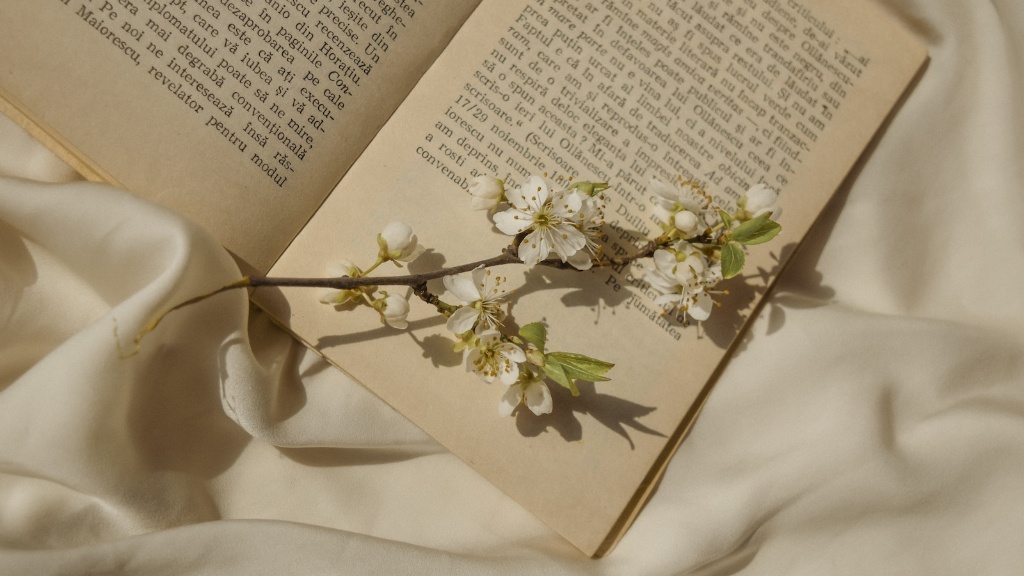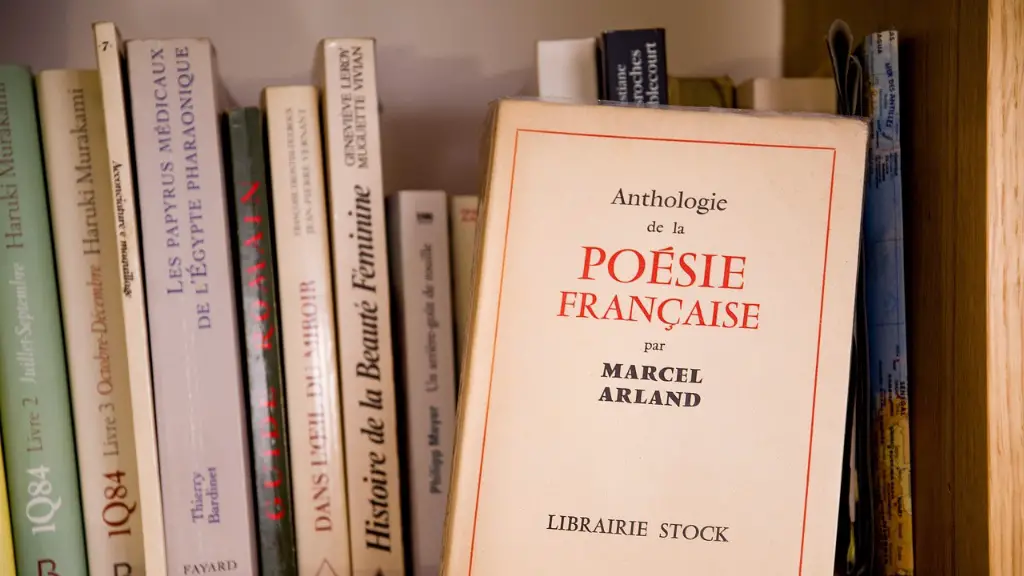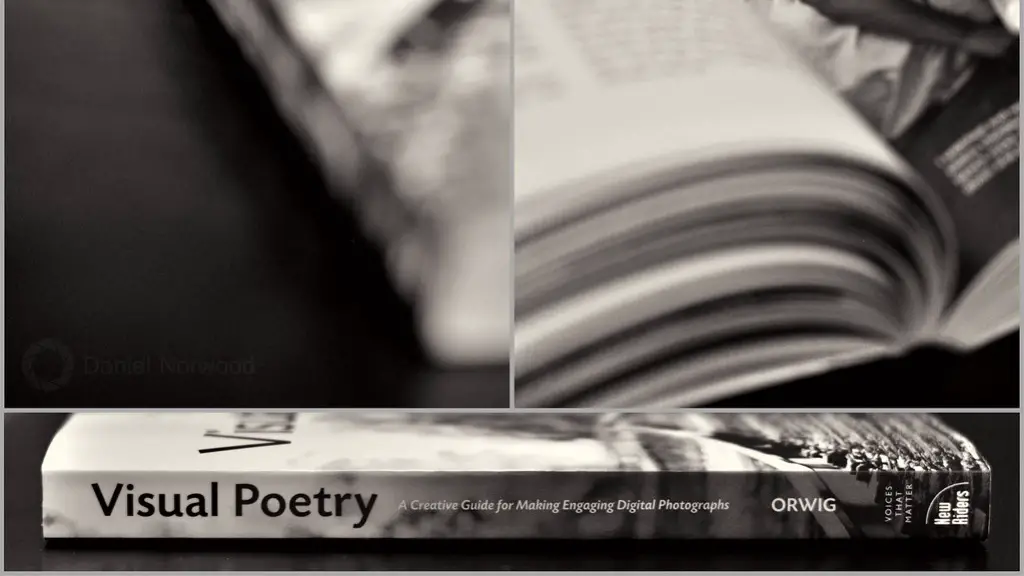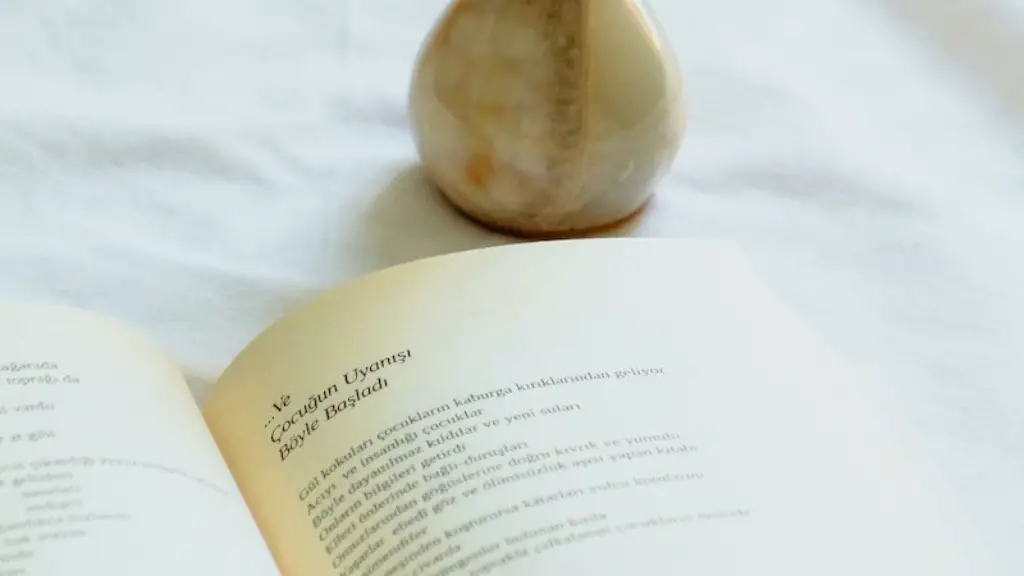Poetry is often seen as one of the most beautiful yet complex forms of art. It gets its appeal from its ability to convey meaning and emotion with language in a way that no other form of writing can. While there is no single definition of poetry, experts have come up with various definitions to help explain its essence.
Traditional Definition
The traditional definition of poetry sees it as a form of literature which expresses emotions and feelings through the use of rhythm and language. This definition highlights the importance of rhyme and meter in a poem, pointing at how words are often tied together with a certain set of rules. Rhyme and meter make the poem easier to read and can also be used to emphasize certain emotions and feelings.
In this sense, poetry is seen as an organized and structured form of language; one which is evocative in nature and allows writers to paint vivid images with words. In this form, it also allows writers to communicate their emotions, thoughts, and experiences in a unique and expressive way.
Modern Definition
However, some experts argue that the traditional definition of poetry is too limiting and one-dimensional. For them, poetry is not only a form of literature which uses rhyme and meter to convey emotion; it is also a way of conveying meaning and ideas, without the need for alliteration or assonance. These experts argue that poetry is more of a creative tool which can be used for self-expression and communication.
In this sense, poetry is not limited to meter and rhyme, but also includes more free-form expressions such as free verse, modernism, and post-modernism. This definition of poetry allows for more freedom in writing, embracing the idea that poetry is more than just language, it is a way to explore ideas and emotions.
Tone and Persuasion
In addition to its ability to express emotions and ideas, poetry can also be used as a persuasive tool. Poets use rhythm and rhyme to create tension and a sense of movement in the poem, which can be used to make an argument or persuade the reader of a certain opinion.
The tone of the poem can also be used to manipulate and persuade the audience. Language can be used to emphasize certain points and feelings, allowing poets to get their message across more effectively. By manipulating the language and structure of the poem, poets can bring more attention to their points and arguments, giving them more power when attempting to persuade the reader.
Connection and Resonance
One of the most powerful aspects of poetry is its ability to connect with readers and evoke strong emotional reactions. Poetry can be used to express pain, joy, sorrow, and other powerful emotions, bringing the writer’s experience to life on the page. By creating a connection between the writer and reader, poetry can help readers to feel a powerful emotional response to a piece of writing.
Poetry also has the power to evoke a sense of resonance in a reader. By exploring universal themes in a poem, writers can create a sense of connection with the reader, helping the reader to identify with their experience. This connection can be a powerful thing, allowing the poet to share their deepest feelings with the world.
Language, Imagery, and Ambiguity
In addition to the emotions and messages that can be expressed through poetry, language itself can be used to create a certain mood and atmosphere. Through the use of rich and vivid imagery, writers can create a powerful atmosphere in their poem, one that can leave a lasting impression on readers. Poets can also use metaphor, similes, and other figurative language to create new meanings and evoke powerful emotions.
In addition, many poets use ambiguity in their work, creating multiple layers of meaning. This can be done through the use of metaphor, simile, and other types of figurative language, allowing the reader to interpret the poem as they see fit. By exploring multiple meanings and ambiguous imagery, poets can create a unique and engaging experience for the reader.
Delivering a Message
Ultimately, poetry has the power to move, inspire, and evoke powerful emotions in readers. It allows the writer to communicate complex feelings and ideas, and convey powerful messages through the use of creative language. By conveying emotion and meaning with language, poetry can reach readers in ways that other forms of writing cannot.
Poetry can also be seen as a form of protest and social commentary. Through the use of language, imagery, and metaphor, poets can challenge dominant ideologies and create new ways of seeing and understanding the world. Poetry can be a powerful tool for expressing one’s views and conveying a message to the world.
Rhythm, Structure, and Form
In addition to its power to express emotion and convey meaning, poetry can also be seen as a form of structured language. Through the use of rhyme, meter, and poetic forms, poets can structure their language, creating an orderly and organized poem. This structure can be seen as an attempt to draw attention to certain words and ideas, allowing the poet to emphasize their point or convey a deeper meaning with their writing.
The structure and form of a poem can also be used to create a sense of unity in the work. Poets often use parallelism, repetition, and other techniques to draw attention to certain words or ideas, creating a cohesive structure that ties the poem together. This can be a powerful tool for creating a sense of unity in a poem.
Personal Interaction
In addition to its ability to convey emotion and messages, poetry also allows writers to explore their own personal experiences and interaction with the world. By using the language of poetry, writers can explore their relationship to the world in a very personal and intimate way. Poets can use language to communicate their innermost feelings, thoughts, and emotions, creating a tangible connection between themselves and the reader.
Poets can also use poetry to challenge the way that we look at the world. By creating a certain perspective in their work, poets can challenge the norms and dominant ideologies of society. This can be powerful for bringing about social change, as it allows the poet to explore and challenge ideas in a creative and original way.
Creativity and Expression
At its heart, poetry is a form of creative expression. It allows writers to explore new and unique ideas, while also conveying emotion and meaning through the power of words. By using language and metaphor, poets can create powerful images and experiences, communicating their deepest thoughts in a unique and effective way.
Ultimately, what makes poetry unique is its ability to convey emotion, ideas, and messages, while also allowing writers to explore their own unique creativity and perspective. Poetry allows writers to express themselves in a way that no other form of writing can, creating an engaging and powerful experience for readers.




